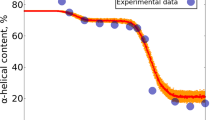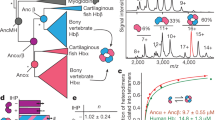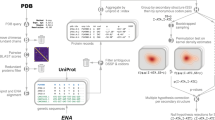Abstract
A FEW years ago, Crumpton1 and Reichlin2 reviewed information about the antigenic structure of globular proteins of known amino acid sequence and three-dimensional structure. It seemed that only a small fraction of the amino acid residues in such proteins participated directly in antibody binding. This impression was reinforced by Atassi and co-workers, who proposed antigenic structures of two such proteins—sperm whale myoglobin3 and chicken lysozyme c (ref.4). These workers claim to have identified all those amino acid residues which bind to antibodies present in antisera directed against the protein. These claims stem from extensive studies with chemically modified forms of the protein as well as with antigenically active fragments obtained by specific cleavage of the protein. The antigenic residues are arranged in groups called determinants, each of which binds a specific class of antibodies. A typical determinant contains four to seven residues. For both lysozyme and myoglobin, the proportion of antigenic residues is about 15% of the total number of amino acid residues in the protein3,4. Information has also accumulated concerning the power of antisera to detect evolutionary substitutions of amino acids in globular proteins. Quantitative immunological comparisons of related proteins of known amino acid sequence have consistently shown a strong correlation between degree of sequence difference and degree of antigenic difference. This has been demonstrated most thoroughly for monomeric globular proteins such as lysozymes5,6, ribonucleases7, azurins8 and cytochromes c (refs 9, 10). Less complete information suggests that the correlation holds also for plastocyanins10, tryptophan synthetase α subunits11, serum albumins12, carbonic anhydrases and myoglobins13 (A. B. Champion, E. M. Prager, S. L. Welch, and A. C. Wilson, unpublished), and ferredoxins14. From the strength of the correlations observed for lysozymes, ribonucleases, azurins and cytochromes (r > 0.9), one may make the statistical inference that about 80% (that is, 0.9 squared) of those amino acid substitutions which accumulate during evolution are immunologically detectable7. Here we summarise additional evidence that the majority of evolutionary substitutions are immunologically detectable, and we discuss how to reconcile this evidence with the chemical evidence that only a small fraction of the amino acids are antigenic.
This is a preview of subscription content, access via your institution
Access options
Subscribe to this journal
Receive 51 print issues and online access
$199.00 per year
only $3.90 per issue
Buy this article
- Purchase on Springer Link
- Instant access to full article PDF
Prices may be subject to local taxes which are calculated during checkout
Similar content being viewed by others
References
Crumpton, M. J. in The Antigens (ed. Sela, M.) 133–158 (Academic, New York, 1974).
Reichlin, M. Adv. Immun. 20, 71–123 (1975).
Atassi, M. Z. Immunochemistry 12, 423–438 (1975).
Atassi, M. Z. & Habeeb, A. F. S. A. in Immunochemistry of Proteins 2 (ed. Atassi, M. Z.) 117–264 (Plenum, New York, 1977).
Jollès, J., Schoentgen, F., Jollès, P., Prager, E. M. & Wilson, A. C. J. molec. Evol. 8, 59–78 (1976).
Ibrahimi, I. thesis, Univ. Calif., Berkeley (1977).
Prager, E. M., Welling, G. W. & Wilson, A. C. J. molec. Evol. 10, 293–307 (1978).
Champion, A. B., Soderberg, K. L., Wilson, A. C. & Ambler, R. P. J. molec. Evol. 5, 291–305 (1975).
Prager, E. M. & Wilson, A. C. J. biol. Chem. 246, 5978–5989 (1971).
Wallace, D. G. & Boulter, D. Phytochemistry 15, 137–141 (1976).
Rocha, V., Crawford, I. P. & Mills, S. E. J. Bact. 111, 163–168 (1972).
Maxson, L. R. & Wilson, A. C. Science 185, 66–68 (1974).
Prager, E. M. & Wilson, A. C. J. biol. Chem. 246, 7010–7017 (1971).
Tel-Or, E. et al., Biochim. biophys. Acta 490, 120–131 (1977).
Hurrell, J. G. R., Smith, J. A., Todd, P. E. & Leach, S. J. Immunochemistry 14, 283–288 (1977).
LaRue, J. N. & Speck, J. C., Jr J. biol. Chem. 245, 1985–1991 (1970).
Prager, E. M., Arnheim, N., Mross, G. A. & Wilson, A. C. J. biol. Chem. 247, 2905–2916 (1972).
Champion, A. B., Prager, E. M., Wachter, D. & Wilson, A. C. in Biochemical and Immunological Taxonomy of Animals (ed. Wright, C. A.) 397–416 (Academic, New York, 1974).
Cocks, G. T. & Wilson, A. C. Science 164, 188–189 (1969).
Sokal, R. R. & Rohlf, F. J. Biometry 96 (Freeman, San Francisco, 1969).
Sela, M. Science 166, 1365–1374 (1969).
Anfinsen, C. B. & Scheraga, H. A. Adv. Protein Chem. 29, 205–300 (1975).
Atassi, M. Z., Tarlowski, D. P. & Paull, J. H. Biochim. biophys. Acta 221, 623–635 (1970).
Wilson, A. C. & Prager, E. M. in Lysozyme (eds Osserman, E. G., Canfield, R. E. & Beychok, S.) 127–141 (Academic, New York, 1974).
Arnon, R. in Lysozyme (eds Osserman, E. F., Canfield, R. E. & Beychok, S.) 105–120 (Academic, New York, 1974).
Imanishi, M., Miyagawa, N., Fujio, H. & Amano, T. Biken J. 12, 85–96 (1969).
Maron, E., Eshdat, Y. & Sharon, N. Biochim. Biophys. Acta 278, 243–249 (1972).
Author information
Authors and Affiliations
Rights and permissions
About this article
Cite this article
WHITE, T., IBRAHIMI, I. & WILSON, A. Evolutionary substitutions and the antigenic structure of globular proteins. Nature 274, 92–94 (1978). https://doi.org/10.1038/274092a0
Received:
Accepted:
Published:
Issue Date:
DOI: https://doi.org/10.1038/274092a0
This article is cited by
-
Three-dimensional structure of an antigen–antibody complex at 6 Å resolution
Nature (1985)
-
Theoretical prediction of antigenic sites in the Β-subunits of human choriogonadotropin and luteinizing hormone
Journal of Biosciences (1985)
-
Correlation between segmental mobility and the location of antigenic determinants in proteins
Nature (1984)
-
Recognition of conformational determinants on H–2 by cytolytic T lymphocytes
Nature (1982)
-
Molecular evolution inDrosophila and higher diptera
Journal of Molecular Evolution (1982)
Comments
By submitting a comment you agree to abide by our Terms and Community Guidelines. If you find something abusive or that does not comply with our terms or guidelines please flag it as inappropriate.



